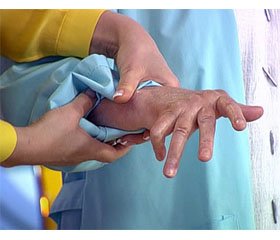Журнал «Боль. Суставы. Позвоночник» 1 (21) 2016
Вернуться к номеру
Dynamic of bone mineral density and pain syndrome in patients with rheumatoid arthritis during the standard treatment
Авторы: Kuryata A.V., Karavanskaya I.L., Garmish I.P. - DSMA Ukraine, Dnipropetrovsk, Ukraine; Lysunets T.K. - Dnipropetrovsk Regional Hospital named after Mechnikov, Ukraine
Рубрики: Ревматология, Травматология и ортопедия
Разделы: Медицинские форумы
Версия для печати
The article was published on p. 75-76
Background. In patients with rheumatoid arthritis (RA) develop both local and systemic osteoporosis due to inflammation and medications that are used in treatment of RA. Severe clinical presentation with a high level of activity, glucocorticoid treatment, low body weight, menopause period, low level of physical activity — are risk factors of osteoporosis development in patients with RA. Question of treatment of osteopenia among such patients is not still closed. According to the EULAR recommendations in that case as first medication we use combination of calcium and vitamin D, but there are more active compounds.

